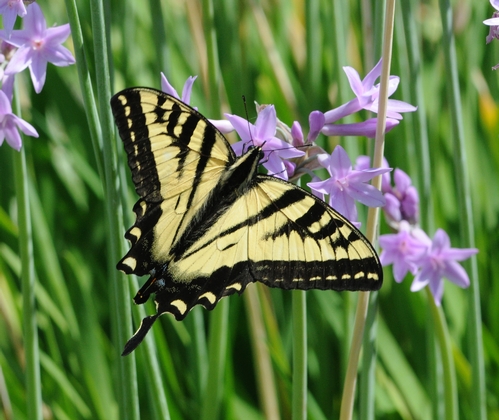
But they are fleeting butterflies.
For the past 35 years, noted butterfly expert Arthur Shapiro (top right), UC Davis professor of evolution and ecology, has documented the prevalence--or absence--of 159 species twice a month at 10 sites from the Suisun Marsh to the Sierras. His massive database, unprecedented among lepitopterists, is part of his popular butterfly Web site.
Last week his database and the plight of the butterflies received international attention via a paper published by lead author Matt Forister in the Proceedings of the National Academy of Sciences (PNAS). The study showed that climate change and land development are taking their toll on butterflies.

In many respects, butterflies are to the environment what canaries are to coal mines.
Titled "Compounded Effects of Climate Change and Habitat Alteration Shift Patterns of Butterfly Diversity" and the work of eight authors, the research paper documents the disastrous effects of habitat loss and climate changes.
Shapiro, author of the book, Field Guide to Butterflies of the San Francisco Bay and Sacramento Valley Regions, says what shocks him is the decline of once common species in the flatlands.
Indeed, prospects for some alpine butterflies, including the Small Wood Nympth and Nevada Skipper, he says, look bleak, too. As he told Contra Costa Times reporter Suzanne Bohan, in her Jan. 19th news article:
"There is nowhere to go except heaven."
Attached Images:

Monarch Butterfly

Western Tiger Swallowtail

Gray Hairstreak